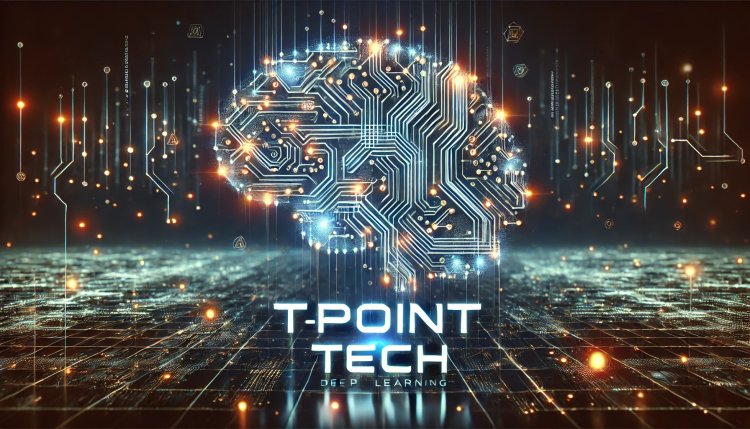Mastering Deep Learning: Key Notes for Success
Deep learning has revolutionized artificial intelligence, enabling machines to perform tasks that once required human intelligence.

Introduction
Deep learning has revolutionized artificial intelligence, enabling machines to perform tasks that once required human intelligence. From image recognition to natural language processing, deep learning plays a crucial role in modern AI applications. If you’re looking for a Deep Learning Tutorial, this guide provides key insights and foundational concepts to help you succeed.
What is Deep Learning?
Deep learning is a subset of machine learning that utilizes artificial neural networks to process vast amounts of data. Inspired by the human brain, these networks contain multiple layers that enable them to learn complex patterns and relationships. The more layers a network has, the deeper it is, hence the term “deep learning.”
Deep learning has gained popularity due to its ability to handle large datasets and extract meaningful patterns without manual feature engineering. It powers applications like self-driving cars, medical diagnosis, recommendation systems, and voice recognition.
Types of Deep Learning
Understanding the types of deep learning is essential for selecting the right approach for specific tasks. Below are the most commonly used deep learning architectures:
1. Artificial Neural Networks (ANNs)
ANNs are the foundation of deep learning, consisting of layers of neurons connected through weighted edges. Each neuron processes inputs using an activation function and passes the result to the next layer. ANNs are widely used in regression and classification problems.
2. Convolutional Neural Networks (CNNs)
CNNs are primarily used for image processing tasks. They consist of convolutional layers that automatically extract spatial features from images. CNNs power applications like facial recognition, object detection, and medical imaging.
3. Recurrent Neural Networks (RNNs)
RNNs are designed for sequential data processing, making them ideal for tasks such as speech recognition, time-series forecasting, and language modeling. Their ability to retain past information allows them to understand context in sequences.
4. Long Short-Term Memory Networks (LSTMs)
LSTMs are an advanced type of RNN designed to overcome the vanishing gradient problem. They are highly effective for long-sequence data and are widely used in machine translation, text generation, and speech synthesis.
5. Generative Adversarial Networks (GANs)
GANs consist of two competing networks — a generator and a discriminator. They are used for generating realistic images, data augmentation, and deepfake creation. GANs have gained prominence in art and creative applications.
Key Notes for Mastering Deep Learning
1. Understand the Fundamentals
Before diving into complex architectures, build a strong foundation in linear algebra, probability, and optimization techniques. Concepts like gradient descent, activation functions, and backpropagation are essential.
2. Get Hands-On Experience
Theory alone isn’t enough; practical implementation is crucial. Work on projects using deep learning frameworks like TensorFlow and PyTorch. Implementing models will deepen your understanding and problem-solving skills.
3. Choose the Right Architecture
Selecting the appropriate deep learning model depends on the problem at hand. For image processing, use CNNs; for sequential data, opt for RNNs or LSTMs. Understanding the types of deep learning helps in making informed decisions.
4. Optimize Hyperparameters
Hyperparameters like learning rate, batch size, and number of layers impact model performance. Experiment with different settings and use techniques like grid search and random search to optimize them.
5. Handle Overfitting and Underfitting
Deep learning models can suffer from overfitting, where they memorize training data but fail to generalize. Techniques like dropout, regularization, and data augmentation help mitigate this issue.
6. Stay Updated with Research
Deep learning is rapidly evolving. Follow research papers, attend conferences, and participate in AI communities to stay updated with the latest advancements.
7. Leverage Transfer Learning
Training deep learning models from scratch requires massive data and computational resources. Transfer learning allows you to use pre-trained models and fine-tune them for specific tasks, saving time and effort.
Conclusion
Mastering deep learning requires a mix of theoretical knowledge and practical experience. By understanding the types of deep learning, experimenting with different models, and staying updated with trends, you can build robust AI solutions. Whether you’re a beginner or an advanced learner, following this Deep Learning Tutorial will set you on the right path to success.
What's Your Reaction?

















.jpg)
